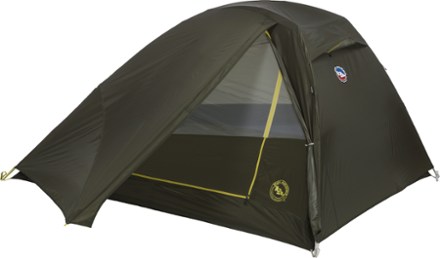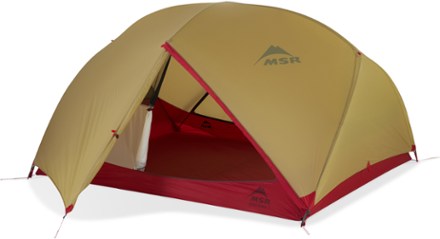Stoves that run on canisters are very popular, and for good reasons. They're lightweight, easy to ignite and quick to boil water. But you may have noticed that it's not easy to keep track of how much fuel is left in a partially used canister. In this article we'll discuss two ways you can figure out how much fuel remains in the canister.
In the first method, you'll use a kitchen scale to weigh a partially used canister and a completely empty one, then subtract the empty weight from the partially used weight to determine how much fuel remains (by grams or ounces).
In the second method, you'll float the canister in a pot of water. Where the waterline lands on the canister is an indicator of how much fuel is left by volume (e.g. half full). You'll need to compare this to a full canister and a completely empty one (or some canisters have a gauge printed on the side).
How to Use a Scale to Tell How Much Fuel is Left in a Canister
Weighing a canister is a quick and simple way to determine how much fuel remains. Of course, you won't carry a digital scale with you into the backcountry, so this is meant to be done at home before you hit the trail. Here's what you need:
- 1 partially used fuel canister
- 1 empty fuel canister that's the same size as the partially used one
- A digital kitchen scale
Follow these steps:
- Weigh the empty canister to get the weight of just the metal canister. Jot this number down. If you don't have an empty canister around, you can figure out the weight by subtracting a full canister's net weight from its gross weight (these numbers are usually printed on the canister).
- Weigh the partially used canister. Jot that number down, too.
- Subtract the weight of the empty canister from the weight of the partially used canister. This gives you the weight of only the remaining fuel in the partially used canister.
It's helpful to then compare this number to the net weight listed on the fuel canister to get a sense for whether the canister is half full, a quarter full, etc.
How to Use Water to Tell How Much Fuel is Left in a Canister
This method can be done at home or while you're out on the trail. Here's what you need:
- 1 partially used fuel canister
- 1 empty fuel canister that's the same size as the partially used one
- 1 full fuel canister that's the same size as the partially used one
- A permanent marker
- A cooking pot big enough to fit the fuel canister inside
- Water
Follow these steps:
- Fill the pot about halfway with water.
- Place the full fuel canister in the water so that it floats upright. You may need to tip the canister slightly while inserting it to let air escape from underneath the canister.
- Take note of where the waterline is on the canister. (It can be helpful to look for where the water touches writing or a logo on the canister.) Remove the canister and mark the spot with a permanent marker.
- Place the empty canister in the water, tilting it as you did with the full fuel canister to let air escape.
- Note where the waterline is on the canister. Remove the canister and mark the spot with a permanent marker.
- Transfer the marks you made on the full and empty canisters to the partially used canister.
- Place the partially used fuel canister into the water, again making sure to let the air escape by tilting the canister.
- Note where the waterline is on the canister. Remove the canister and mark the spot with a permanent marker.
- Compare the location of the mark you just made on the partially used canister to the marks taken from the full and empty canisters to approximate the amount of fuel remaining.
If you want, you can complete steps 1 - 6 at home prior to heading out on a trip so that all you must do in the field is to measure the partially used canister. Also, you'll find that some fuel canisters, such as those by MSR, have a gauge printed on the side so you don't need to make any marks with a marker. All you do is put the partially used canister in the water and note where the waterline lands on the gauge.
Now that you know how to figure out how much fuel is left in a canister, what do you do with that information? We have an article for that, too. Check out How Much Stove Fuel Do I Need for a Backpacking Trip? to learn how to calculate your fuel needs.




